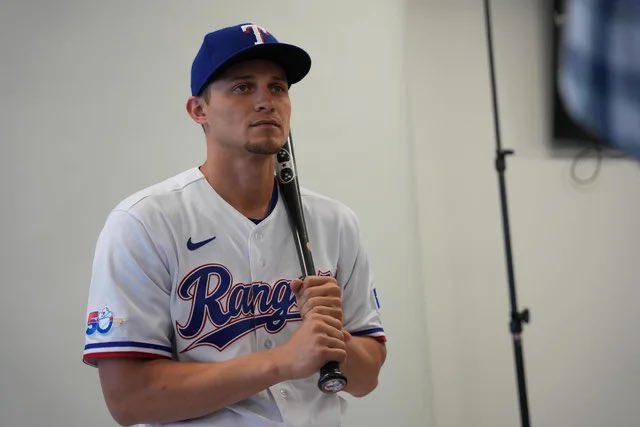Where Do the Texas Rangers Go From Here?

Before the MLB-imposed lockout began a million lifetimes ago, there was a sliver of offseason in which teams were pretty busy trying to improve themselves while they still could. At the forefront of those teams was the Rangers, who splurged on nine-figure contracts for Corey Seager ($325 million over 10 years) and Marcus Semien ($175 million over 7 years). Such elite acquisitions are a bit unusual for a team coming off a 102-loss season, but the combination of having gobs of open payroll and a shiny new stadium must have convinced ownership to make the investments. The question now is, even with the playoff field presumably expanding to 12 teams, how much more do the Rangers need to add to their roster to realize their playoff aspirations?
As you were probably guessing, dear reader, the answer is a lot. The Rangers have managed to turn their moribund product into a more entertaining draw, and may even be crowned the “winners of the offseason” when all is said and done, but they’re still far away from the cream of the AL West crop.
As the Padres have proven, the team who makes the flashiest offseason moves doesn’t always see that translate to regular season success. Even though Seager and Semien were two sorely needed big bats for a lineup devoid of much punch, the supporting cast necessary for a competitive squad just isn’t there yet. Adolis García sputtered in the second half and squeaked in with a league-average 100 wRC+ at season’s end, and their WAR leader from last season, Joey Gallo and Isiah Kiner-Falefa (2.3 WAR in 2021) are beardless Yankees now. Nate Lowe (1.6 WAR)was a complementary guy, but there isn’t anyone else around who can be competent big-league starters until Josh Jung heals up.
The outfield stands out as a major area of need, then, even after the low-fanfare addition of Kole Calhoun. Calhoun is slated to receive the lion’s share of time in right field according to FanGraphs, so pushing him out of regular time should be an area of focus. There were two exceptional right-fielders on the market in the form of Nick Castellanos and Seiya Suzuki. Castellanos obviously has the more established bat of the two, but Suzuki is younger, cheaper, and a better defender. Either one would be an impactful improvement, but not true game-changers unless major upgrades are made to the pitching staff as well. Unfortunately, after spending more than half a billion dollars on infielders, the Rangers just watched while the outfielders ended up with the Phillies and Cubs, respectively.
Consider that Seager, Semien, Jon Gray and Calhoun were worth a combined 12.6 WAR last season – if you cut and paste that production, after accounting for the contributions from players they’re replacing, they still would have won only around 71 games last year. If Castellanos had also been on the team, 75 wins. That’s an overly simplistic way of looking at it, but it underscores the fact that this team won’t suddenly be able to hang with the Astros, Mariners, A’s or maybe even the Angels this summer.
Now that their payroll has ballooned exponentially, though, expectations will be dramatically heightened for them. The self-induced pressure to win now has started their competitive clock early, and it won’t keep ticking forever. Seager and Semien will age out of their primes, but not out of their paychecks. Gray, their de-facto ace at the moment, is on a four-year deal and his prime years won’t last longer than that anyway. Their only real hope is to double down on these risky investments and force their competitive window further open. If they don’t make the playoffs at least a couple times in the next four years or so, the Seager and Semien signings will have to be seen as failures, even if they perform well and help sell a few more season ticket packages. It just doesn’t make sense if the only plan is to lose 90 games instead of 100 this summer.
If the Rangers are serious about winning ballgames in 2022, their to-do list should read – two starting pitchers, a right fielder, and a closer. Even then, they’d have to cross their fingers that some of their younger guys, such as Nick Solak and A.J. Alexy, take meaningful steps forward. The Phillies are a good example of what happens when your high-priced guys perform well and you get nothing out of your younger, cheaper players – you need to have a balance of both.












